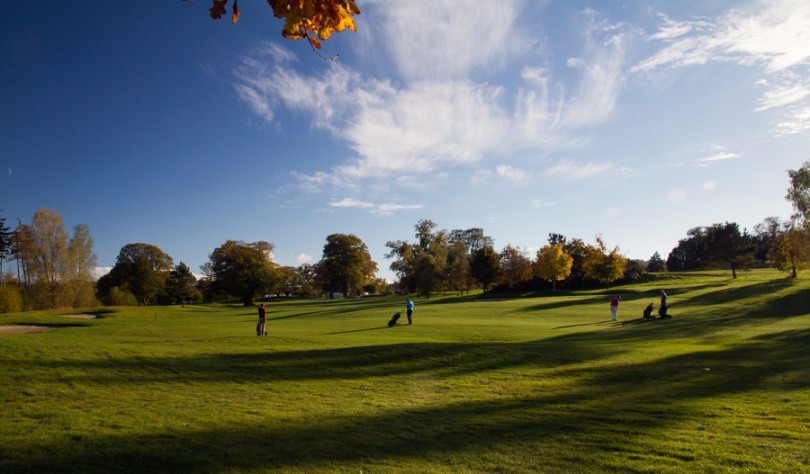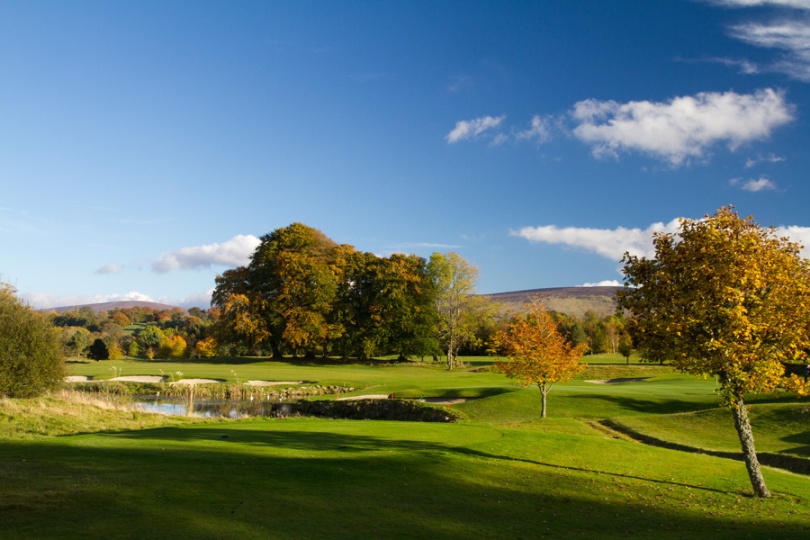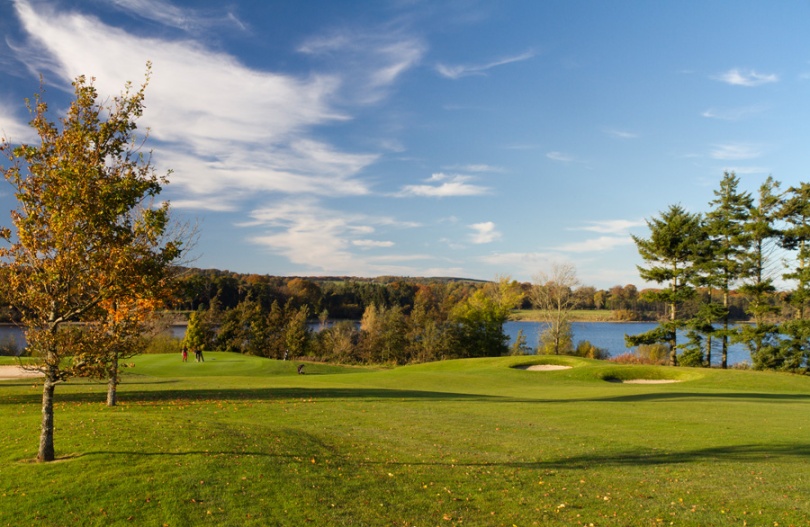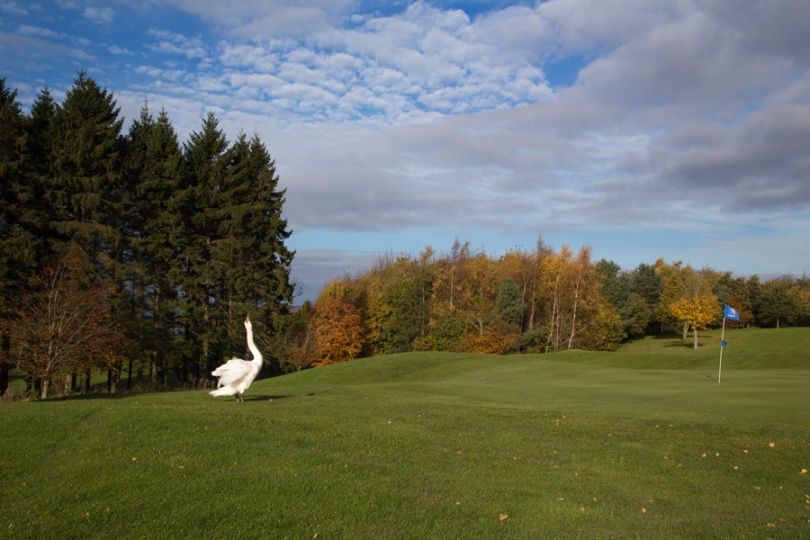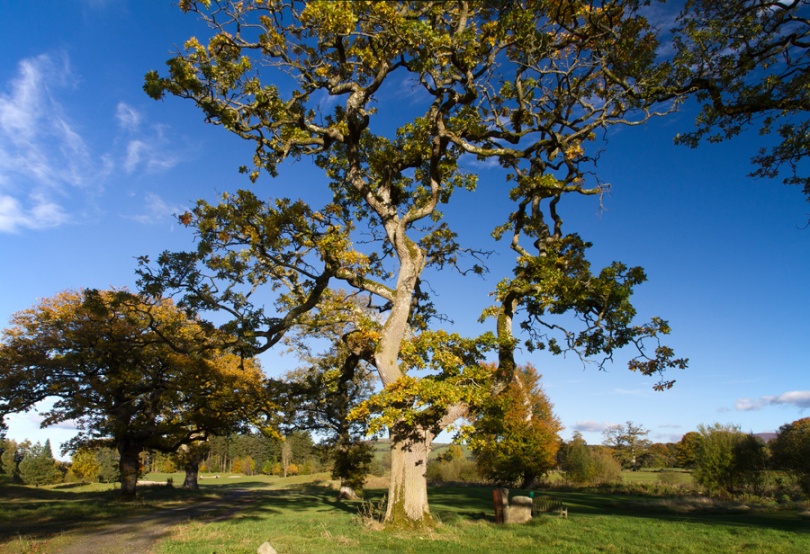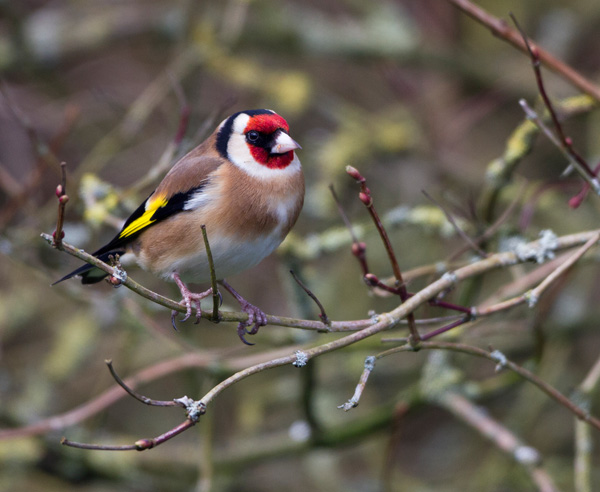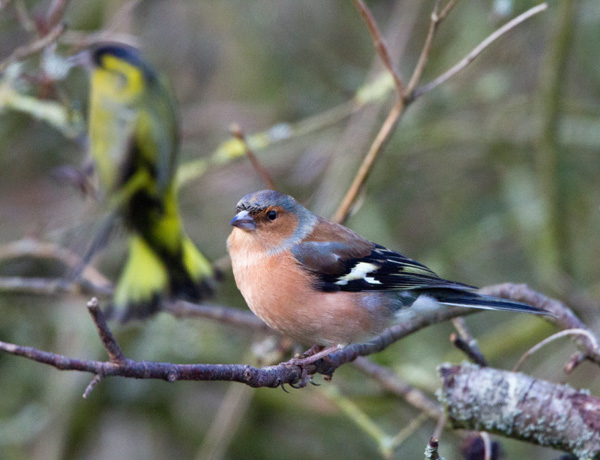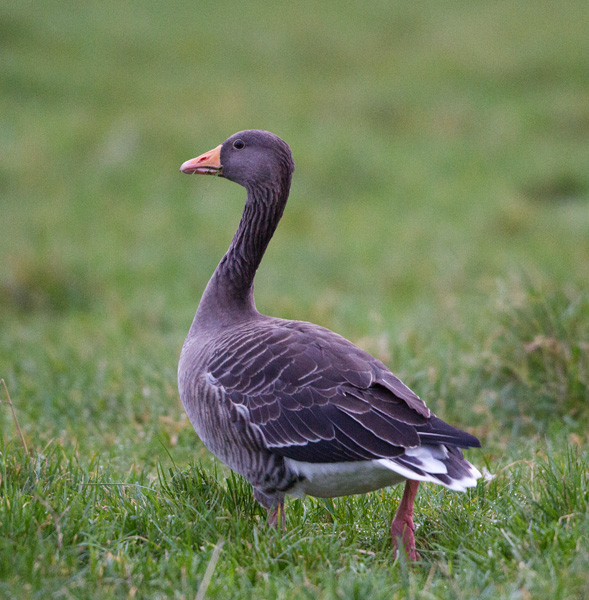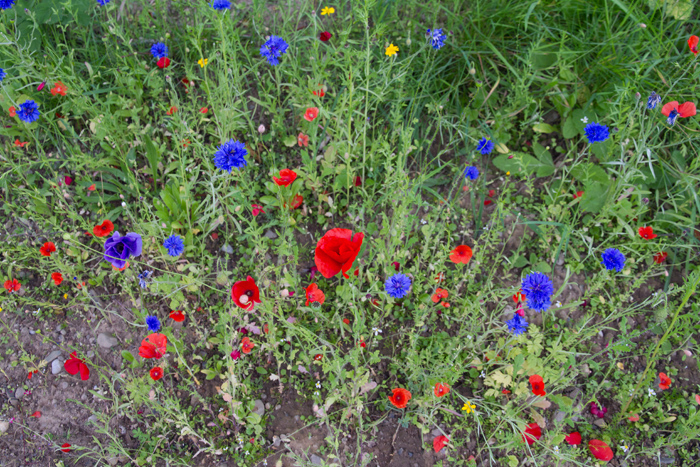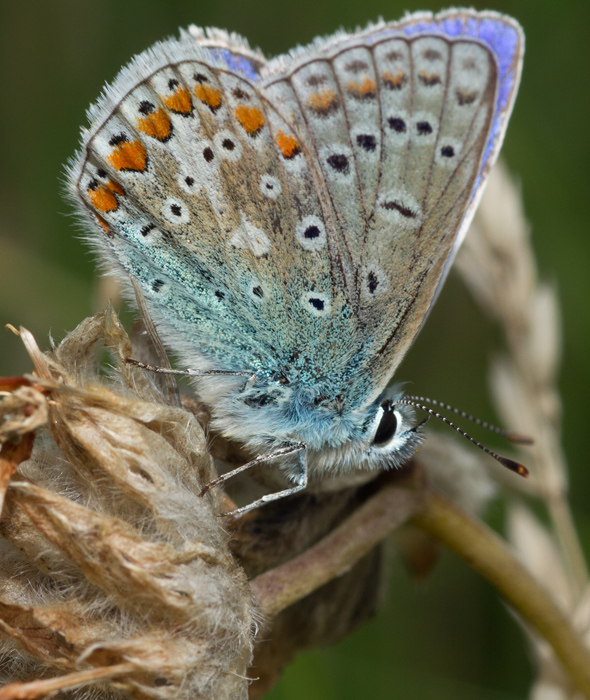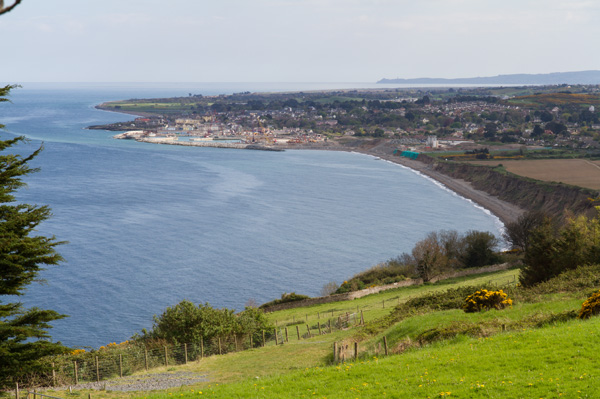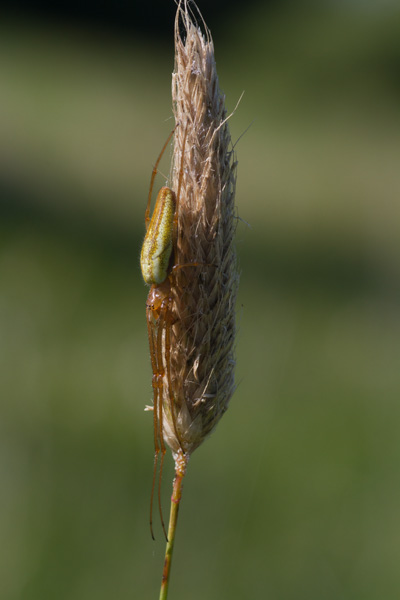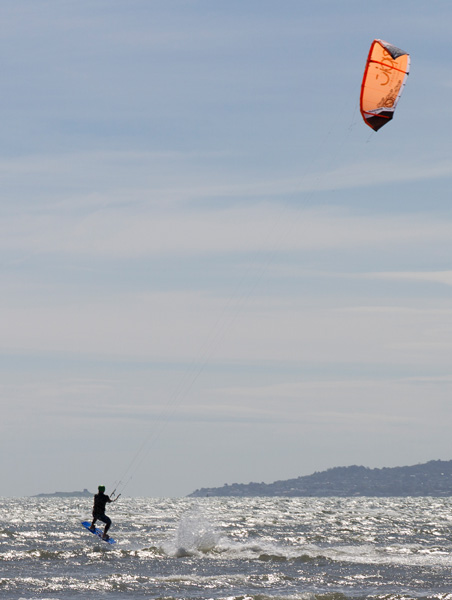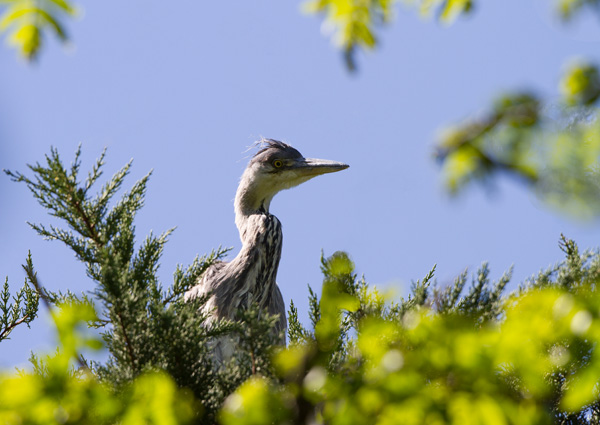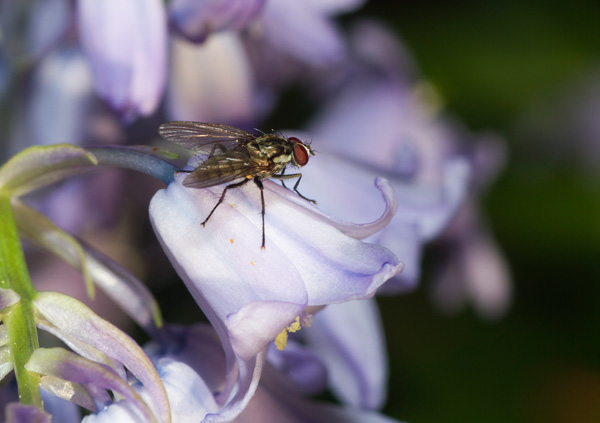18 Shades of Green
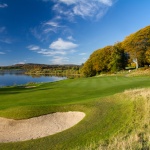
There seems to be a lot of polarisation over golf. So many people play it and enjoy it but there are also a lot of people who think it a waste of space.
I am biased here. I do like my round of golf and would argue that whatever else, golf courses tend to preserve a plot of nature – land, plants, scenery and wildlife – that otherwise might be destroyed in another commercial exercise.
.
.
.
.
.
This post is about Tulfarris Golf Club, one of the many fine courses in Ireland, and indeed Wicklow, and one of the prettiest.
…………………….Tulfarris is a challenging course but its real charm lies in its trees and views which help even the worst rounds and encourage wildlife. Deer, Foxes, Buzzards, Ravens, Little Grebes, Sedge Warblers, Mute and Whooper Swans as well as many other species can be found here.
At the end of the day, though, it is the magnificent Oak and Beech trees that really show Tulfarris off.
Moving On
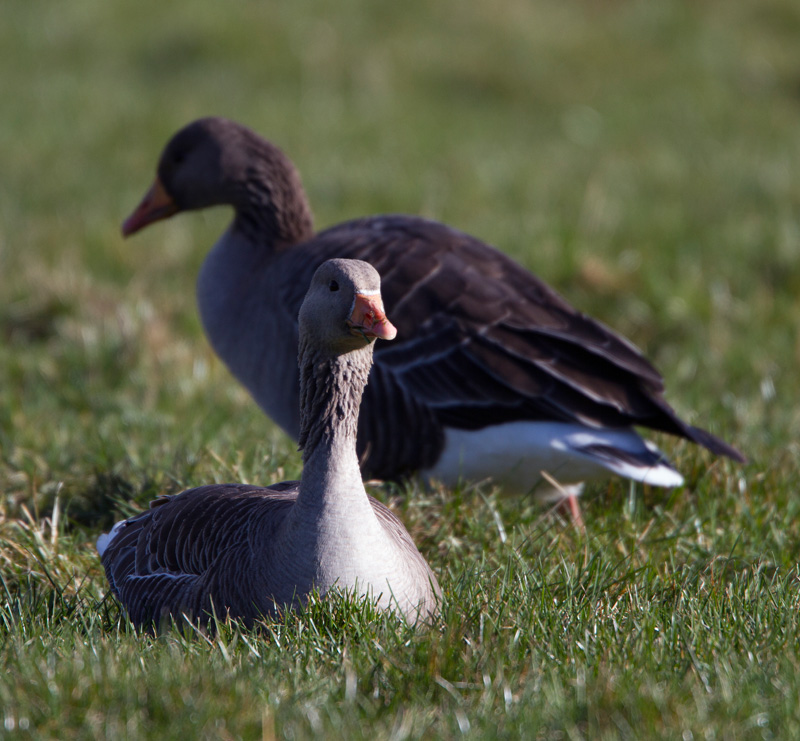 A very brief ‘less cold’ spell seems to have convinced the Whoopers to migrate back north. The Greylags were not so easily fooled and still graze in Willie’s field.
A very brief ‘less cold’ spell seems to have convinced the Whoopers to migrate back north. The Greylags were not so easily fooled and still graze in Willie’s field.
Walking down the Liffey quays towards the lifting bridge, a group of Brent Geese had gathered a couple of weeks ago. They are probably about to, or in the middle of migrating.
It is interesting to note their amazing travels while we lament their passing.
Whoopers typically fly to Iceland and northern Europe from Ireland while Greylags mainly return to Iceland.
Brent Geese, quite common flying over Dublin or grazing on grass fields, including football fields, in the Winter, head for Greenland or Canada.
.
.
.
It seems that when temperatures are beginning to get tolerable for us, the winter migrant birds get hot under the collar and feel the pull for colder climes.
Of course the weather this Winter and ‘Spring’ has been pretty miserable – one of the coldest March months on record.
But spring really is in full swing regardless of the cold and frost. Witness the Crows at their rookeries, the Jackdaws sitting on wires or branches in pairs, not to mention the cute spindly-legged foals and the gorgeous young lambs.
Garden Finches
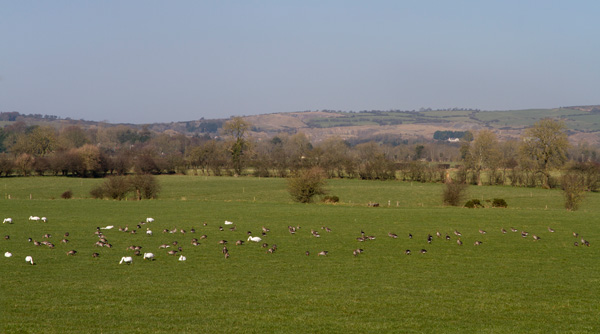 Well Spring is gathering pace and the weather is drier. Magpies are very obvious as they build elaborate nests and birds are amorous.
Well Spring is gathering pace and the weather is drier. Magpies are very obvious as they build elaborate nests and birds are amorous.
However we haven’t yet seen the first frogspawn in our Wicklow imitation of the North Pole and the Whoopers and Greylg Geese are still next door.
 We are not, of course, wishing our lovely neighbours would leave.
We are not, of course, wishing our lovely neighbours would leave.  They are brilliant to watch as they shuffle across the fields, making sure not to miss any thick grass and leaving the fields smoother than many lawnmowers!
They are brilliant to watch as they shuffle across the fields, making sure not to miss any thick grass and leaving the fields smoother than many lawnmowers!
It’s more a question of figouring out where we are in the natural order after cold and wet spells.
.
Interest inside our garden was even greater yesterday.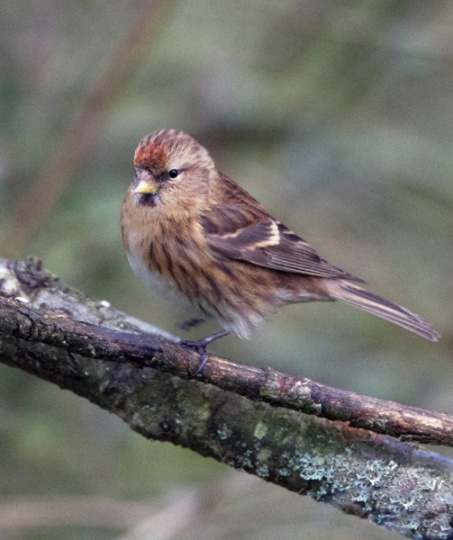
Glorious finches had their day. Hard on the heels of the Bullfinch and Greenfinches of last post (https://cliffsview.wordpress.com/2013/02/05/more-signs/), the sun (and the nut feeder) brought out quite a range of finch beauties, some of which hadn’t been seen too much this year:-
- Chaffinch
- Greenfinch
- Redpoll
- Siskin
- Goldfinch
and a special!
.
.
.
.
.
.
.
.
.
.
.
.
.
.
.
.
.
.
.
As I was getting accustomed to the array of finches battling for position on the feeder (not really a battle when the smaller but quite aggressive Siskin is about!), I thought I saw something different.
Could it be a bird long on my list of wannasees?
Sure was. My first sighting of a Brambling. It was a female in winter colouring, similar to a Chaffinch but a bit more striking without being more colourful.
She didn’t stay too long, A coulpe of short visits was all I got but it has taken a long time to see…. and to find it at home!
Happy Days!
Winter Woolies and Whoopers
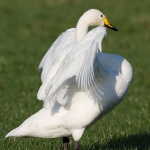
 Well the cold continues but maybe not as bad as previous years – yet. The temptation is to stay wrapped in woollies indoors. But winter is an interesting time in the great outdoors.
Well the cold continues but maybe not as bad as previous years – yet. The temptation is to stay wrapped in woollies indoors. But winter is an interesting time in the great outdoors.
Firstly the winter flowering shrubs such as Viburnum brighten gardens on even the dullest days.
.
.
.
.
.
.
.
Secondly, as a side benefit of the cold, winter migrators such as Swans and Geese are attracted to Ireland. We have the pleasure of living beside prime Whooper Swan & Greylag Geese real estate.
For many years, fairly large flocks could be seen and heard just over our garden wall. In recent years they have been less in number and sometimes absent – particularly the geese. Perhaps they found alternate accommodation or perhaps global warming had shifted them.
This year there are reasonably large flocks of Greylag Geese and about 20 Whooper Swans.
.
.
.
.
Whoopers really are large birds .  Watching them as they feed, rest, stretch and fly is a real pleasure, especially from the comfort of the house.
Watching them as they feed, rest, stretch and fly is a real pleasure, especially from the comfort of the house.
As wild birds, they are easily disturbed and tend to stay well removed from our wall. To see them properly usually requires binoculars. But sometimes they come closer, where perhaps the grass is thicker.
The birds move between the lakes and the fields and make quite a sight in the air – like large jets, it seems unreeasonable that they should be able to fly. In fact they are amongst the largest flying creatures in the world.
And yet they are very good flyers and cover great distances, usually coming to Ireland from Iceland and Northern Europe.
.
They are also a joy to hear. Their honking sounds gave them their name, which was apparently originally Hooper.
.
The Swans stay fairly close together but sometimes intermingle with the Geese.
.
.
.
.
.
.
.
Greylag Geese are fairly common in Ireland in winter. They are of course much smaller than the Whoopers and much darker. It is only their number and sounds that make them conspicuous.
They too have probably travelled from Iceland where they breed.
.
.
.
.
.
.
.
.
.
.
.
.
.
While not ‘showy’ they are still striking when seen up close, with browny grey and white plumage, an orange beak and pinkish legs.
.
So plenty of reasons to venture out and smell the flowers.
Don’t Despair, it’s Nice Out There
Just a little reminder that although the Summer is well over ,  some of our best days are ahead.
some of our best days are ahead.
Crisp days in Winter are amongst the best for getting out and enjoying the view and the colours in Autumn and early Winter are very special.
So get out, get walking and smell the humus!
Wicklow Way, Kilmore Quay – Spiders and Insects – Review of 2010 – August
August
 Wicklow is known as the Garden County. Some garden!
Wicklow is known as the Garden County. Some garden!
Brilliant scenery, great walks, and full of wildlife, this is my extended home!
Amazingly it is close to around 2 million people and yet remains mainly wild.
Perhaps we should keep it secret.
.
The wicklow way winds its way across the mountains with railway sleepers in places making the going easier. There are great wild flowers to be found.
.
.
.
.
At home in Blessington, someone grew ‘wild’ flowers in a rough patch beside the road.
Perhaps not truly wild but they were colourful and probably beneficial to other wildlife.
.
.
.
.
Birds were still around but they tend to go a bit quiet in August.
.
.
.
Insects and bugs on the other hand, seem to be everywhere,
.
.
‘Evil’ spiders were commonplace, this one paler than usual on the wall of our house.
.
.
.
.
On a short visit to Kilmore Quay, one of my favourite places, the weather was good and many insects flitted in the dunes.
.
.
.
.
There were many 6-spot Burnets feeding on the wild flowers.
When we were young (just a few years ago), my brother Don and I regularly cycled to Bull Island and spent a lot of time in the valley between the dunes and St. Annes Golf course, looking for birds such as Cuckoos, Pipits, Larks, Reed Buntings and the odd Long Eared Owl.
But a lot of our time was spent looking at or for other things – Pigmy Shrews and Butterflies & Moths, mainly.
The 6-spot Burnet was one of the commonest moths, together with the Cinnabar.
.
,
,
.
.
.
.
.
,
,
,
The dunes at Kilmore Quay also held many Common Blue Butterflies.
This is a male with its wings together showing the markings underneath.
They whiz around a lot and annoy would-be viewers and photographers but when they do alight they often ‘pose’ like this with the wings up.
.
.
.
.
.
.
.
,
,
,
But the colours shown when the wings are ‘out’ in the ‘normal’ position, are superb – a brilliant electric blue, seeming to shimmer and almost defy hue definition.
.
As is common for the animal kingdon,if not for humans, females are a duller brownish colour.
,
,
,
,
,
,
,
,
,
.
.
.
In the harbour at Kilmore Quay, Grey Seals were frequent visitors to feed on discarded fish scraps from the fishing activities.
The Grey Seal has a different shape head to the less common ‘Common’ Seal.
It is said to be more dog-like and this one does look a bit like a dog looking for a bone!
.
.
.
One of Ireland’s birding jewels, the Saltee Islands, is a short ferry ride from Kilmore Quay, but that’s another story.
Where to Watch / Walk – Bray Head
 Many people know Bray head as the bit that sticks up beside Bray town in Wicklow. Those of my age or older will remember the cable car that used to bring people up to a viewing spot on the head.
Many people know Bray head as the bit that sticks up beside Bray town in Wicklow. Those of my age or older will remember the cable car that used to bring people up to a viewing spot on the head.
Access is easy by bus, DART, or car and it is only about 12 miles from Dublin.
If you can wrench yourself from the throngs of people along the sea walk and from the ice creams, slot machines and aquarium, there is a really lovely walk around the sea side of Bray head overlooking the railway line.
The Bray head walk is good any time of the year but looks particulrly well in Summer when the head is a mass of yellow gorse flowers. Great views out to sea and along the coast are amongst the rewards.
Although it is not a place to get away from people, there are a good variety of birds that can be sen here. These include most of our Gull species and Rock Pipits like the one below.
.
Rock Pipits tend to stay around rocky coasts and headlands unlike their cousins the Meadow Pipits that unsurprisingly favour meadows.
They have thin beaks showing they are tuned to insect eating unlike the larks with which they can sometimes be confused, which have thicker beaks better suited to eating seeds.
.
.
.
.
It is possible to get good views of a few nesting species without leaving the path. This Fulmar was happily nesting on an old concrete structure very close to the path.
.
.
Related to Albatrosses, with similar ‘tube’ noses, Fulmars look a little like Gulls but hold their wings very stiff when flying.
.
.
.
Even easier to see are Cormorants nesting on a rocky outcrop. There is a chance that you may smell the colony before you see them!
The nests are twigs and seaweed piled up into a mound on the bare rock, with a slight hollow to keep the eggs in. It is great to see these birds that look to be very close to dinasours in their look and shape.
.
In fact they do not have the waterproof oil that ‘modern’ birds use to keep their feathers in flying condition. That is why Cormorants are often seen near motionless, with their wings outstretched – living washing lines.
.
.
.
.
The walk continues on to Greystones to the south and takes about an hour or so, depending on how often you stop to gaze and admire.
If too tired when you get there, the DART can be taken back to bray or all the way to Dublin.
Insects, Spiders & Flowers – Review of 2010 – June
June
In mid-summer Dublin looks great, especially if it isn’t raining. But then it actually doesn’t rain as much as is commonly believed and when it does it is mostly not too heavy. It is rare not to be able to get out for a walk. The wildlife is generally at full charge with multi-coloured flowers, some nests still being used, babies being nursed and youngsters out exploring.
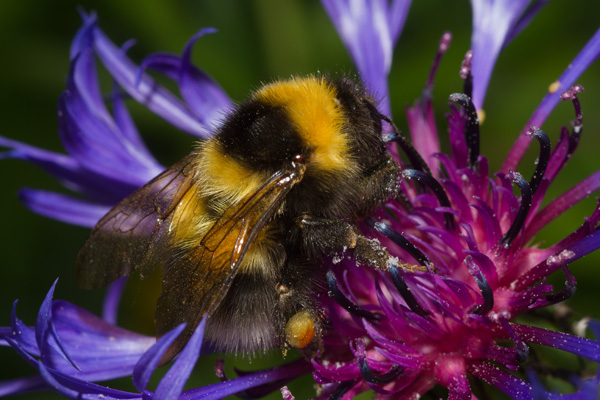
In my garden Bumble Bees were buzzing. There are usually a few types although bees of the beekeepers’ kind are apparently on the decline in Western Europe. Bumble Bees are much larger and are the bees we usually visualise. The pollen sac collected from numerous flowers can be seen clearly in this photo of a Garden Bumble Bee on a Cornflower.
It is worth planting suitable flowers to attract insects. Apart from the joy of watching them and the knowledge that you are helping them, flowers planted near vegeatable plots can help to keep greenfly and other creatures less desirable by food and image gardners, in check, by encouraging insects that feed on them.
For this purpose, the best flowers are those with strong scents and this often means old varieties as modern catalogues are full of pretty flowers in a plastic doll fashion – nice for a fleeting look but no real character and of little use to anyone or anything. How often so even find a modern rose with a good scent?
Incidentally those supporting the conservation of old seed varieties should be supported as much as possible as remarkably, large corporations are being allowed to trade mark and own life-forms such as new seed varieties and they are actively trying to remove the older varieties to avoid competition!
On a visit to Athlone for a 50th birhday celebration, I got a chance to look around some of the Lough Ree lakeside habitats. Damselflies were mating around the wet and marshy areas and a dense mixture of different plants and flowers made progress slow.
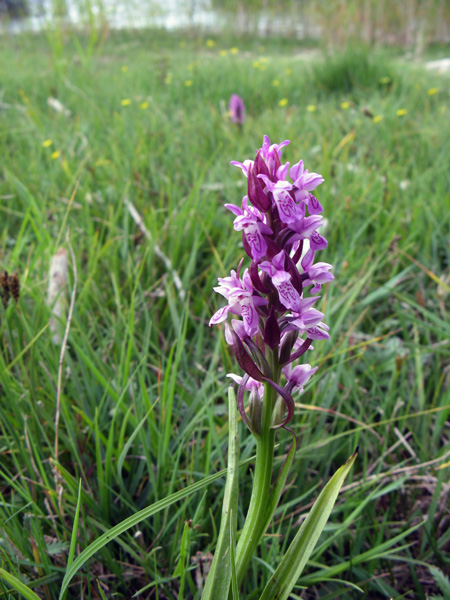 Amongst the more colourful and surely the most interesting flowers were the orchids. The one below, taken with a compact (party) camera, is an Early Marsh Orchid, I believe, though I’m no expert. The petals have lovely markings.
Amongst the more colourful and surely the most interesting flowers were the orchids. The one below, taken with a compact (party) camera, is an Early Marsh Orchid, I believe, though I’m no expert. The petals have lovely markings.

Coming back to animal life, spiders tend to get a bad press. In June they were also thriving. But what’s not to like about this beautiful spider which was camaflagouging himself by extending his legs along the seed head of a grass stalk beside Blessington Lakes.
There are a lot more spiders around us than many would believe, or wish to know about! Looking under the leaves of most plants will show at least one spider although they can be very small and hard to see.
In the home spiders are useful in keeping other insects under some control and are worth the odd ‘cob-web’. Balance is all important. Politicians please note.
Dublin City, Wicklow – Baby Birds, Insects & Sport – Review of 2010 – May
Many of us get fed up hearing about how it always rains in Ireland. Well it doesn’t. And when it does it is usually not very heavy and not for too long. And sometimes (usually in May) we get some weeks of sunshine! May 2010 was one of those times.
Buildings in Dublin looked at their best. It is amazing though, how little those of us who are used to the city, really see and how seldom we look up! The roofline in some parts of the city is great, particularly in Dame Street (opposite) and Georges Street. Have a look up next time you’re in Dublin but I can’t promise mediterranean style blue skies!
Dublin Castle also looked well with its just opened Garda Memorial Garden. This is an interesting design with a water feature but it’s hardly in keeping with the old castle and Royal Chapel beside it. Still, it has to be better than squeezing another new building in.
Down the road in Trinity College, the magnificent Oregon
Maples were in full leaf and dominated front square. There are many great old trees (and buildings) in Trinity and a walk around the grounds is rewarding – especially when the sun shines.
Sometimes it’s good to be a ‘local tourist’.
I am fundamentally a northsider and it was good to visit my original home area in good weather.
In the sea, sporty folk kite-surfed while in tall trees in the woods. young herons called for thier supper from large stick nests.
May usually brings the height of nature activity and this includes gardens all over the country. Even our own unkempt parcel of private wilderness was looking well and thriving with plants, insects and birds. ‘Friemds’ will understand how wild a garden can be!
Finally a word about the ‘new’ birds of prey. I have seen a buzzard in County Dublin but so far none of the reintroduced species. I took a spin out to the Reddross area of Wicklow in the hope of seeing one of the Red Kites but no joy. Although the scenery was too photegenic to ignore in the sunshine.

